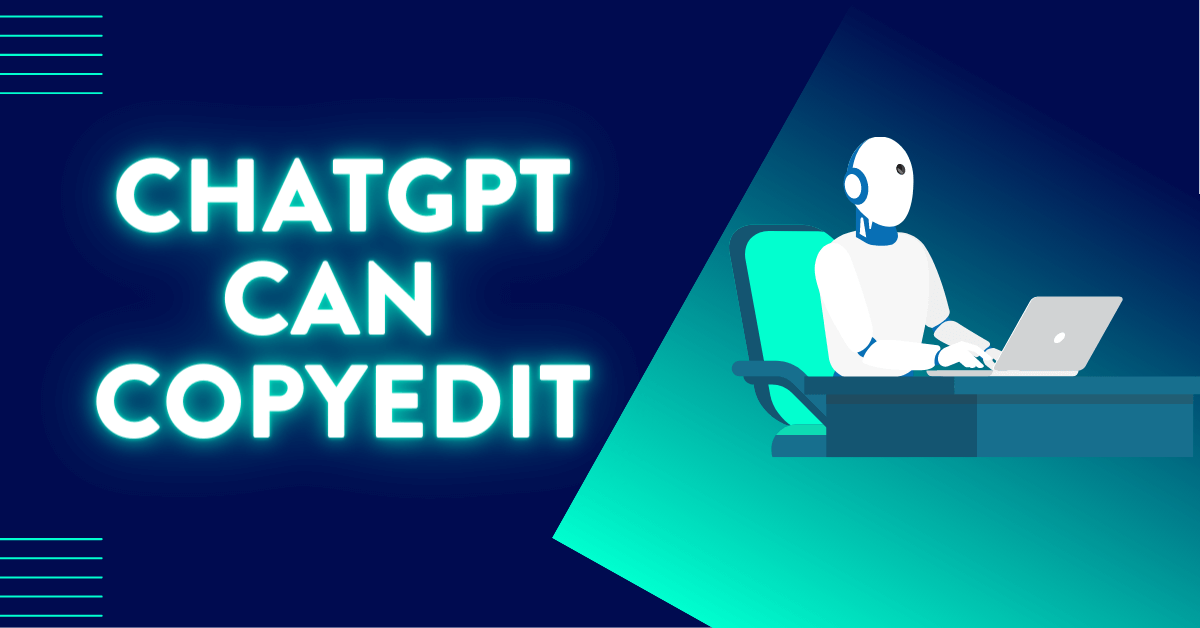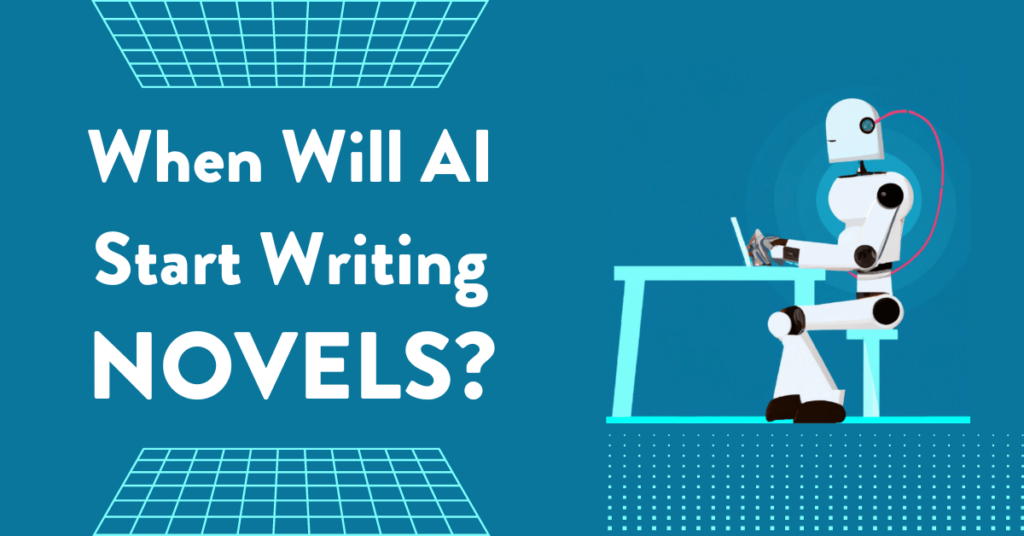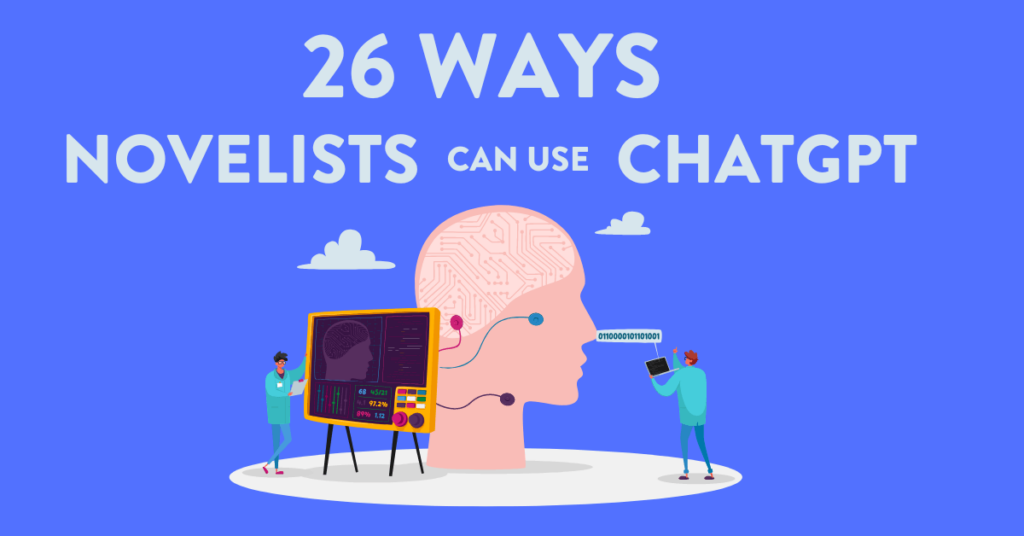
Goldman Sachs estimates that 300 millions jobs will be replaced by AI in the coming years, and one of those jobs will be copy editor.
In 1 – 2 years, the vast majority of freelance copy editors will be out of work.
Yes, most publishers will retain copy editors to make sure everything is tip-top, but out of the nearly 100,000 freelance editors out there, the vast majority make their living from freelancing for indie authors.
Those jobs will no longer exist. Because ChatGPT will be good enough to do everything.
Copyediting is a job that’s perfect for a computer — it’s just correcting according to strict rules, dealing with language, and it’s very repetitive.
The Copyediting Test
I give a copyediting test to freelance copyeditors. It’s less than one page long. I’ve seen some people say they are copy editors and find less than 50% of the mistakes. If I’m working with a really good freelance editor, then they will find 80% to 90% of the mistakes. Most freelancers score in the 70% range.
The first time I ran this copyediting test through ChatGPT, it corrected 55% of the errors. This is the prompt that I used.
Act like a copyeditor and edit this manuscript according to the Chicago Manual of Style. Focus on punctuation, grammar, syntax, typos, capitalization, formatting and consistency.
With this prompt, these are the errors that ChatGPT4 caught:
- correcting two words into a single word
- adding commas
- deleting commas
- Focusing on tricky grammar (using “who” to refer to a person rather than “that”)
- Correcting a misspelled character name (which was missing one letter)
- Deleting extra spaces through the manuscript
- Correcting plural vs. possessive (adding apostrophes)
- Correcting verb tense (“are” instead of “is”)
- Sophisticated punctuation — like em dashes rather than hyphens
- Made periods go inside quotation marks
If you look at that list again, it’s quite impressive. It certainly puts Microsoft Word to shame, and definitely beats Grammarly and ProWritingAid.
What ChatGPT Missed
These are some things that ChatGPT missed:
- tricky capitalization (highlands should be Highlands — but most human copyeditors also missed this).
- hyphenating two adjectives before a noun
- Spelling out numbers (it doesn’t seem to recognize any of the Chicago Manual rules about numbers)
- Missing some double words that are actually single words (yes, it caught some but also missed some).
Advanced Copyediting
To help ChatGPT try to find all those errors it initially missed, let’s use a more sophisticated prompt
Act like a copyeditor and proofreader and edit this manuscript according to the Chicago Manual of Style. Focus on punctuation, grammar, syntax, typos, capitalization, formatting and consistency. Format all numbers according to the Chicago Manual of Style, spelling them out if necessary. Hyphenate double adjectives before a noun. If a single word has been split into two words, combine it into a single word.
With this more complex prompt, this time ChatGPT was able to catch a few more of the mistakes it made.
- It added the correct hyphenation for two adjectives before a noun
- It corrected all the numbers properly, even the tough ones like 50 percent (rather than fifty percent or 50% — half the human copyeditors messed up on this one).
- Now it caught the other single word that had been split into two words
This result was much, much better. Actually, it was a spectacular result. With just a single tweak to the prompt, now ChatGPT had found virtually all of the mistakes, with much more consistency than the human editors.
Results
There were 26 mistakes in the Copyediting Test.
The first round of copyediting, ChatGPT only caught 16 of the errors.
With this more complex prompt, ChatGPT caught 24 of them. That’s higher than 90%, which is higher than most of the freelance human editors.
With the right prompt, ChatGPT is already a better copyeditor than most freelance copyeditors.
Sure, if you’re in the top 1% of copyeditors, and working for a publisher that needs every error corrected, then your job is safe.
But for the vast amount of freelance copyeditors, they will be out of jobs. Indie authors are always bootstrapped for cash, and this is a major boon for them. Suddenly, one of the main expenses of self publishing has just been eliminated. (and honestly, the second main expense is cover art, which MidJourney and Dall-E 2 will provide.)
The most important step in using ChatGPT as a copyeditor is to tweak the prompt until it finds the mistakes that it’s missing. Of course you have to know what mistakes it’s missing, but hopefully using the prompt above will get you most of the way there.
Consistency
The biggest problem with making ChatGPT your copyeditor is consistency. There were small variances each time I ran this page through ChatGPT.
It would catch a mistake one time, then not catch it the next six times.
For instance, the first time I ran it through ChatGPT, it inserted a space between the initials of a character’s name (which is correct, according to Chicago Manual).
The second time it did not add that space (with the exact same prompt).
The first time I ran it through, it added commas to demarcate a character’s name in the middle of a sentence.
The next few times, it did not add those commas.
But you have to remember that we are extremely early in this technology. Wait until a few more iterations come out, and these inconsistencies will be smoothed out.
Make ChatGPT Format
Now, by default, ChatGPT only works with plain text.
Obviously, this doesn’t work for copyediting because sometimes things need to be italicized, or non-italicized (for emphasis).
It also doesn’t work because Chicago Manual requires several things:
- Book titles need to be italicized rather than in quotes.
- Correcting dumb quotes into smart quotes — because ChatGPT in plain text only uses dumb quotes, you wouldn’t be able to correct those mistakes.
- Indenting each paragraph
Some users have said this problem can be solved using this command: “Format it in Markdown.”
This is good if you have chapter titles in a different font size or other complex formatting like bulletpoints. But when I tried this, it didn’t work. It first rewrote it as code, and then did not add italics and smart quotes.
So I would recommend simply adding to the original prompt: Use italics and smart quotes and indent each paragraph.
Ideal Prompt
Act like a copyeditor and proofreader and edit this manuscript according to the Chicago Manual of Style. Focus on punctuation, grammar, syntax, typos, capitalization, formatting and consistency. Format all numbers according to the Chicago Manual of Style, spelling them out if necessary. Use italics and smart quotes and indent each paragraph.
Sometimes ChatGPT has trouble doing all of these at once, so it might be better to do them in stages. First start with the copyediting and proofreading command (and see whether it corrects numbers).
Then do a second round with more specific copyediting commands (like numbers).
Lastly, end with the formatting instructions (italics and smart quotes and indents).
Each manuscript might need a slightly different prompt, so be willing to tweak the prompt as you go to make sure ChatGPT finds all the errors.
Length
ChatGPT has limits on the amount of text you can submit at a time. That means you can’t copy/paste your entire manuscript and ask it to copyedit it in one fell swoop (although I bet this will change in the next year or two).
But for now, you will have to ask it to do copyediting chapter by chapter, and perhaps splitting up your chapters by half if you have long chapters.
I believe the limit is currently 3,000 words. I attempted to put in three chapters (16,000 words) and it refused to work with so much text.
No Mistakes
I’ve used many copy editors over the years, and tested a lot of human copy editors over the years, and I always find they insert at least two or three errors over a book.
They change something and forget to alter the other half of the sentence, or they add a typo in a random location.
Sure, they fix 99% of the problems, but they also create a few problems. This is why proofreaders are always necessary — to fix what the copy editor missed.
But with ChatGPT, I have not found any error creation. If it corrects something, it’s correct.
That’s a huge benefit it has over human copy editors.
Copyediting vs. Line Editing
If you ask for copyediting, ChatGPT only makes very small line edits.
For instance, it rephrases the line slightly.
- Original: “…the brooch of his dear sister that had been slaughtered by the cousins of Coragan.”
- ChatGPT: “…the brooch of his dear sister who had been slaughtered by Corragan’s cousins.”
Or it deletes a word and adds a comma to streamline the sentence:
- Original: Behind him, no less than 20 men fanned out with their weapons visible but sheathed.
- ChatGPT: Behind him, no fewer than twenty men fanned out, their weapons visible but sheathed.
Deleting the “with” and adding a comma is a good line edit, one that many human editors would do.
Line Editing
What if we rewrite the prompt to focus on line editing rather than copyediting and proofreading?
New sample prompt: Act like a line editor and edit the following manuscript for flow, style and readability.
ChatGPT made small changes to word choice and phrasing:
- Instead of “came down” it suggested “descended”
- Instead of “He waited on top of his horse” it wrote “Perched atop his horse…”
- Instead of “got so close” it wrote “drew near enough”
- It made no changes to dialogue
My overall impression of ChatGPT’s line editing is that it doesn’t know what is better and what it worse. It just rewrites a passage to give the author another option.
For instance, look at this example:
- Original: Corragan smiled, a wicked superior smile, that made Bran feel angry
- ChatGPT: Corragan’s smile was wicked and smug, igniting anger within Bran
I’m not sure the second example is better. Perhaps the second example is more the author’s style, or perhaps it isn’t. But it’s not better. A human editor wouldn’t go through a manuscript and change every line like this.
So using ChatGPT as a line editor should be more like an outside consultant to give you another vision of your work. But most of the changes you shouldn’t accept, not if you want to preserve your authorial voice.
Essentially, ChatGPT is MUCH better at copyediting than at line editing.
Advanced Line Editing
Here’s a better prompt:
Act like a line editor and edit the following manuscript for flow, style and readability. Focus on word choice, syntax, pacing, and clarity. Make sure to have the sentences vary in length, opening phrases, and number of clauses and conjunctions.
Because this prompt is so much more complex, with much more instruction, ChatGPT will do much more rewriting than the original prompt. But I found the rewrites to be better than the original, simple prompt.
I tried adding this instruction: Do not alter the phrasing of sentences unless you are certain that it’s better than the original.
But ChatGPT ignored it and rewrote almost everything, so it’s difficult to rein in AI and make it act more judiciously.
You also have a ton of options when it comes to style.
For instance, if you wanted to lower the diction level of your entire manuscript, because you used too many big words, ChatGPT would excel at that task. It also would excel at raising the diction level and making the writing sound more sophisticated.
Another choice would be to skew the writing in some way:
- Act like a line editor and make this sound more colloquial
- Act like a line editor and make this manuscript sound energetic and enthusiastic
Once again, it all comes down to the author knowing how they want to change the manuscript, and writing a good prompt for ChatGPT to follow, and then tweaking that prompt until they get the desired result.
Developmental Editing
ChatGPT cannot do developmental editing. I tested it with a novel chapter, a short story, and a children’s book.
The advice was terrible.
ChatGPT understands the various parts of writing (Point of View, pacing, beginning/endings), but has no feeling for how to change a manuscript so the fictional storyline works better.
On the surface, it appears to have authority, and sound like it knows how to fix the story, but when you think about the advice it’s clear that it’s a smokescreen and ChatGPT doesn’t understand narrative at all.
Plus, it gives advice in every category that you ask for, even when a change isn’t necessary.
For instance, if I ask it to act like a developmental editor and give advice on Point of View, it will offer criticism even if criticism isn’t warranted. So it’s not making judgments about the quality of your storyline, it’s just aping what a developmental editor would do (offer criticisms).
If you’re a beginning writer, I would strongly advice against relying upon it for revision advice. This might change in the future, but it would be a big leap forward for the technology.
Copyeditors + ChaptGPT
Currently — at this very moment — copy editors should be running manuscripts through ChatGPT for an initial run, and then copyediting them by hand.
Right now, a hybrid of software + human is stronger than software alone or human alone.
But soon, very soon, ChatGPT will be doing all the copyediting by itself.
At first, computers playing chess were mocked by human grandmasters for being weak and shortsighted. But in a short decade, they were beating the world grandmaster Kasparov, and now they can beat every single human player.
I would not recommend betting against ChatGPT. Yes, right now it has some flaws, but within six months, or a year, or two years, it will easily outperform almost all humans (or perhaps all of them) and do so in a fraction of the time (and the cost).



7 comments
Great article! I recently had two line editors edit my latest book. Both rated as the best on Fivver! Both came back with remarkably different edits.
I just started using ChatGPT and with a a carefully constructed prompt close to all edits needed were found.
While I feel bad for the editors, 90% of my time is spent working with editors. Not to mention the long lead times, up to ninety days. The cost is tough as well.
So thank you for this terrific article.
What version of ChatGPT did you use for this test?
ChatGPT 4
Great article, did you write it using ChatGPT? Only joking. I’ve had varying experiences using Copyeditor’s who claimed to be well qualified and charge the earth and still leave errors for me and my readers to find. When you have limited funds you do take note of the expense and sometimes you’re forced into the new technology. I’m going to try using ChatGPT and have it proof read. Very informative thank you. (please note that no Humans, Animals, or Robots where harmed in writing this:)
Yeah I want this to be premeditated foretelling of my book us using this website as a reference so hopefully stil alive when projects out
Hi there,
I am a German author and currently in the process of translating my manuscript using DeepL. Now I am in ChatGPT and read your beautiful article here. Thre questions:
1. You did this in GPT directly, not using an app there like “Write for me”?
2. Does it make sense to first run the text through the prompt with copyeditor & proofreader editing acc. to Chicago Manual of Style – and then re-run this with the line editor prompt?
I was thinking of that combine approach especially to turn dialogue into more natural collquial style.
1. Yes, ChatGPT directly.
2. A combination approach might work well.
In the future, someone will create an app where you can upload your entire novel and it will copyedit it perfectly.